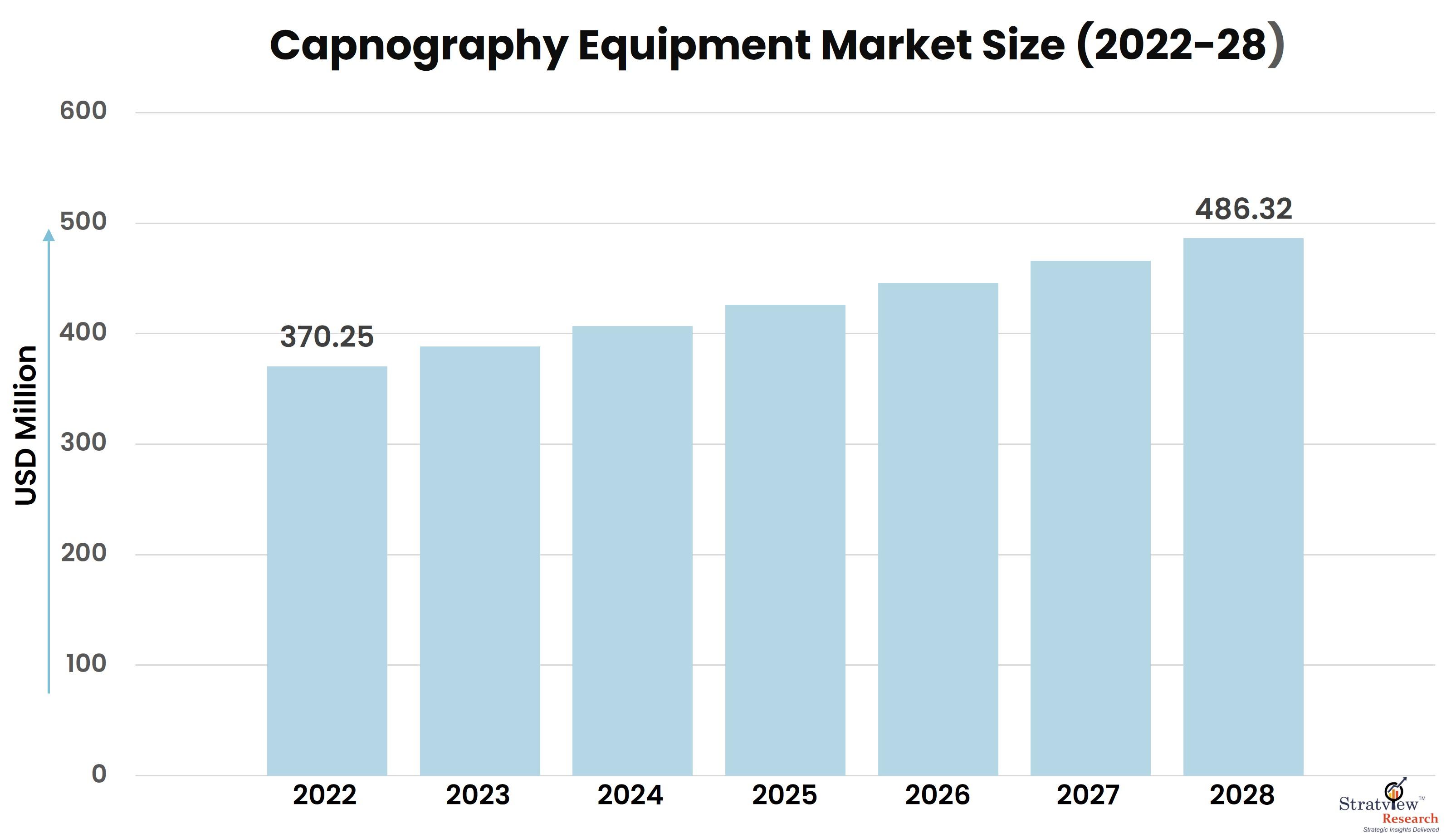According to Stratview Research, the capnography equipment market was estimated at USD 370.25 million in 2022 and is likely to grow at a CAGR of 4.6% during 2023-2028 to reach USD 486.32 million in 2028.
In the ever-evolving landscape of healthcare, the precision and depth of monitoring respiration have taken a giant leap forward with the advent of capnography equipment. This article delves into the intricate world of respiratory monitoring, exploring the nuances and trends that define the capnography equipment landscape—a vital terrain in the pursuit of understanding and enhancing patient respiratory well-being.
- The Essence of Respiratory Monitoring: Respiratory monitoring stands as a cornerstone in healthcare, providing insights into the efficiency of the respiratory system. Among the array of technologies, capnography equipment has emerged as a sophisticated and real-time method for tracking the intricacies of respiration.
- Unveiling Capnography: Capnography, a term derived from "carbon dioxide" (CO2) and "graphy" (writing), involves the measurement and graphical representation of exhaled CO2 levels. This technique offers a dynamic and continuous assessment of a patient's ventilation and metabolic status.
- Real-time Insights into Ventilation: What sets capnography apart is its ability to provide real-time insights into ventilation. The equipment measures the concentration of CO2 in exhaled breath, offering a waveform that reflects the respiratory cycle. This waveform is a visual guide for healthcare professionals to assess the adequacy of ventilation.
- Mainstream and Sidestream Technologies: Navigating the capnography equipment landscape involves understanding the variations in technology. Mainstream capnography directly measures CO2 levels in the patient's airway, while sidestream capnography draws a small sample of exhaled air. The choice between these technologies depends on clinical requirements and patient conditions.
- From Anesthesia to Emergency Medicine: Capnography's versatility is evident in its applications across various medical settings. In anesthesia, capnography ensures precise monitoring of a patient's respiratory status during surgery. In emergency medicine, it serves as a crucial tool for rapid assessment and intervention in critical situations.
- Enhancing Patient Safety: Patient safety takes center stage in the capnography equipment landscape. Continuous monitoring of end-tidal CO2 levels enables healthcare providers to detect changes in ventilation immediately. This proactive approach enhances patient safety by allowing timely intervention and preventing adverse respiratory events.
- Procedural Sedation and Beyond: The landscape extends to procedural sedation, where capnography is becoming a standard practice. It ensures vigilant monitoring of respiratory function during medical procedures, offering an extra layer of safety. Beyond sedation, capnography proves invaluable in various clinical scenarios requiring respiratory assessment.
- Compact and Portable Solutions: Advancements in technology have led to the development of compact and portable capnography solutions. These user-friendly devices enable healthcare professionals to monitor respiratory parameters in diverse settings, including ambulances, clinics, and even at-home care, expanding the reach of respiratory monitoring.
- Integration with Ventilators: Capnography seamlessly integrates with mechanical ventilators, offering a continuous feedback loop on the effectiveness of ventilation. This integration ensures that ventilated patients receive optimal respiratory support while minimizing the risk of complications associated with mechanical ventilation.
- Telehealth and Remote Monitoring: The capnography equipment landscape is evolving to meet the demands of modern healthcare, including telehealth and remote monitoring. Telemedicine applications enable healthcare providers to monitor respiratory parameters remotely, facilitating continuous surveillance for patients with chronic respiratory conditions.
- Data Analytics for Informed Decision-Making: The incorporation of data analytics into capnography equipment adds a layer of sophistication. Analyzing respiratory data over time allows healthcare professionals to make informed decisions about patient care. Trends, patterns, and anomalies in capnography waveforms contribute to personalized and targeted interventions.
- Regulatory Compliance and Standards: Navigating the capnography equipment landscape involves adhering to regulatory standards and guidelines. As capnography becomes integral to respiratory care, healthcare professionals must ensure compliance with regulations to guarantee the safe and standardized use of this technology.
- Training and Education Initiatives: An essential aspect of the landscape is the emphasis on training and education initiatives. Healthcare professionals are equipped with the knowledge and skills needed to interpret capnography waveforms accurately, fostering a comprehensive understanding of this technology.
- Future Horizons: As we navigate the capnography equipment landscape, the horizon is filled with promise. Anticipated innovations include advancements in sensor technology, greater integration with electronic health records, and further exploration of capnography's potential in emerging areas of healthcare.
- Paving the Way for Respiratory Precision: In conclusion, monitoring respiration through capnography equipment is paving the way for respiratory precision in healthcare. The landscape is defined by a commitment to patient safety, technological advancements, and the continuous quest for a nuanced understanding of respiratory dynamics. As capnography evolves, it stands as a beacon in the landscape of respiratory monitoring, navigating breath by breath toward a future where the intricacies of respiration are unraveled with unprecedented clarity and accuracy.
